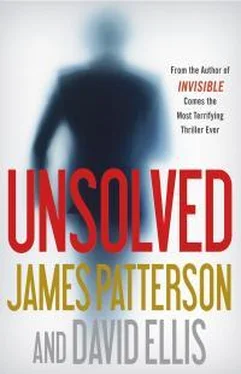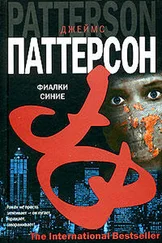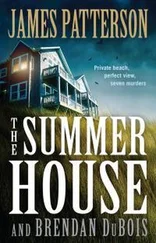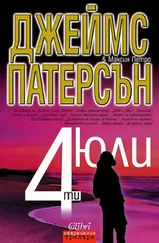Words appear on the black screen in white block letters—THE REAL EMMY DOCKERY—then dissolve.
Images of front pages of several newspapers fade in and out like whack-a-moles:
Feds Nab
“Invisible Killer”
Ford Field Bomber Dead
Manhunt For “Graham”
Ends in Cannon Beach
“It’s Over”—Graham
Captured and Killed
The screen goes black again, then opens to an aerial view of a house, orange flames sweeping out of its second-story windows, then the roof collapsing.
“Fires,” says the narrator in a soothing baritone voice. “Homes are engulfed in flames every day due to various accidents—an overturned candle, a cigarette, a frayed wire. Every year, three thousand people die in their homes from fires. A house goes up in flames every ninety seconds in the United States, in neighborhoods big and small, rural and urban. Atlantic Beach, Florida. Monroe, North Carolina. New Britain, Connecticut. Lisle, Illinois.”
The screen shifts to the aftermath of another fire, the structure battered and shrunken to gray ash.
“Peoria, Arizona.”
A screenshot of a newspaper, a headline from the Peoria Times:
Home Fire Kills Peoria Woman
“Marta Dockery was killed in that fire in Peoria. Officials said the fire was an accident. Everyone agreed. Everyone but Marta’s twin sister, Emmy.”
A photograph of two girls in their teens, tanned and squinting into the camera, one a bit shorter than the other, with darker hair and fuller cheeks. The twin thing, you could see it, but they were anything but identical, these two. The camera zooms in on the taller and ganglier girl.
“Emmy insisted that it wasn’t an accidental fire. That it was murder.”
The screen goes dark.
Then a shot of the J. Edgar Hoover Building in Washington, DC, headquarters of the FBI.
“Emily Jean Dockery was a data analyst for the Federal Bureau of Investigation,” says the narrator. “Her life was numbers and statistics. She wasn’t a field agent. She wasn’t a fire investigator. So when Emmy Dockery insisted that her sister’s death was murder, nobody believed her.”
Images of excerpts from another newspaper article, enlarged:
Eight months after her sister’s death in a house fire, Emmy Dockery is still on a crusade to convince the Peoria Police Department that Marta Dockery’s death was not an accident, but murder.
“All forensic evidence points to death by an accidental fire.” A middle-aged woman appears on the screen with the caption Nancy Parmaggiore, chief of staff to the director of the FBI. “Emmy was able to convince a very skeptical team of seasoned veteran investigators not only that her sister was murdered but that a serial killer was out there committing some of the most gruesome crimes imaginable.”
Now there’s an elderly man on the screen; the caption identifies him as Dennis Sasser, special agent, FBI (ret.). “Nobody believed Emmy. I didn’t. But we never would have caught Graham if it weren’t for Emmy. In fact, we never would have even known that crimes were being committed in the first—”
Charlie fast-forwards the video. He knows this part. Everyone does. The manhunt across the country. And then the final showdown, Graham dead and Emmy, well…alive, at least.
He stops about forty-five minutes into the documentary. The screen has faded to black again.
Then the narrator: “And what has become of the FBI analyst who caught and killed Graham?”
An image of paramedics hauling a woman on a gurney down a driveway toward an ambulance, the entire scene filled with police cars and flashing lights and armed law enforcement. This, Charlie knows, was after Emmy’s face-to-face encounter with Graham.
“According to reports, Emmy Dockery suffered extensive injuries that day: deep scalp lacerations, burns over a large portion of her body, a punctured lung, a broken ankle.”
Dennis Sasser again: “Emmy was horribly injured. She endured terror that is difficult to put into words.”
Then the narrator: “It took half a dozen surgeries and three months before Emmy Dockery was released from the hospital. And then…”
The screen goes dark. An ominous sound, a single beat of a soft drum.
And this newspaper headline:
Paramedics Called to Graham-Catcher
Home in Urbanna
The screen fades to black again. Then an older woman, her gray hair pulled back, wearing a defiant expression, appears. The caption reads Dorian Dockery. “My daughter wasn’t trying to kill herself,” she says.
Charlie pauses the video and takes a breath. He’s read many of the various reports that came out afterward—that Emmy Dockery had suffered a nervous breakdown, that she’d gone into hiding, that she was receiving both death threats and love letters from purported serial killers.
“You broke into pieces, Emmy,” he whispers. “But you put yourself back together. You survived. Just like me.”
Charlie closes his eyes and does what he always does when he remembers. First he beats back their garbled shrieks, the hot breath of their terror, the smells of scorched flesh and splattering blood and perspiration and pure human fear burning his nostrils even now.
And then he accepts them. Lets their contents settle inside him, mix together, and jell.
His body cools. His pulse slows.
“It is a thinking man’s war,” he reminds himself. A quiet war, Charles Darwin said, lurking just beneath the serene facade of nature.
His eyes open. On the screen, the video is still paused, having just transitioned from the words of Emmy’s mother to a photo of Emmy, her hair in a ponytail, a fierce look on her wounded face. Her eyes on his. His eyes on hers.
Lonely, determined eyes.
“We could do so much together,” Charlie says.
4
HARRISON BOOKMAN—known as “Books” to everyone—feels his phone buzz at his hip as he helps a customer choose the right nonfiction selection for her grandfather, a history buff. They decide on a book about LBJ’s struggle to get Congress to pass the Civil Rights Act of 1964. He feels a small flicker of satisfaction as he rings up the transaction. He loves everything about books, but this is his favorite part of the business, talking with a customer and finding just the right novel or nonfiction work, like a sommelier helping diners choose the perfect bottle of wine to pair with their meal.
Now if only there were more customers.
At least he has Petty, bald and clean-shaven, sitting in the corner in one of the comfy chairs reading The Sun Also Rises by Hemingway; next to him is a cup of the coffee Books always has brewing. It probably isn’t the greatest idea to let a homeless man hang out in your store, but Petty keeps to himself and keeps himself reasonably presentable, and, really, how could Books turn away a guy who served two tours in Desert Storm and gave up so much for his country, not least of which was his sanity?
Petty is a part-time resident of the inventory room in the back of the store. He’s slept there a few nights a week every week since Books first met him six months ago, last December, sitting on the sidewalk outside the store. He shaves and washes up in an old shower that Books revived after converting the space from an old apartment.
Books watches his customer leave. His eyes wander over to the front window, where the name of the store—THE BOOK MAN—is stenciled prominently; the newest releases and local favorites are arranged just so to lure in the shoppers and the passersby in downtown Alexandria.
Then he turns the belt pouch holding his phone upward so he can see who just called. He glances at it, then does a double take.
Читать дальше












